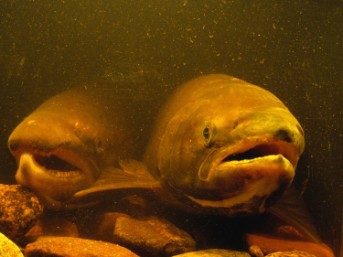Salmonid Adaptations
Funding: EU-FP7, ESF, Fisheries Society of the British Isles

Representative Publications
Fridjonsson et. al (2011). BMC Genomics 12: 179; Consuegra & García de Leániz (2008). Proc. Roy. Soc. Lond. (B) 275: 1397-1403; Garcia de Leaniz, C., et al (2007a). Biological Reviews. 82: 173-211; Garcia de Leaniz, C., et al (2007b). Local Adaptation. Consuegra & Garcia de Leániz (2007). Evolutionary Ecology 21: 229-245.; Ciborowski et al (2007). Biology Letters 3: 554-557; Consuegra et al (2005). Conservation Genetics 6: 823-842.; Consuegra et al (2002). Molecular Ecology 11: 2037-2048. ; Garcia de Leaniz & Verspoor (1989). Journal of Fish Biology 34: 41-46.